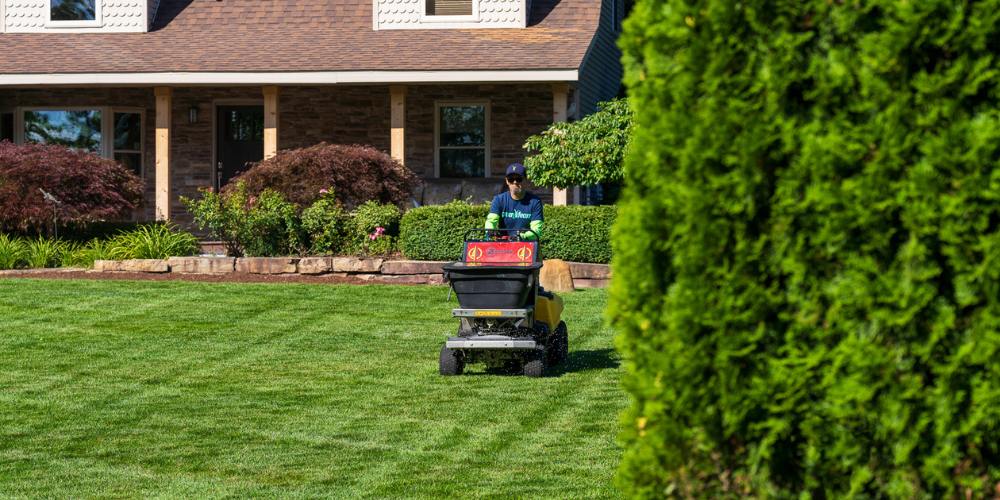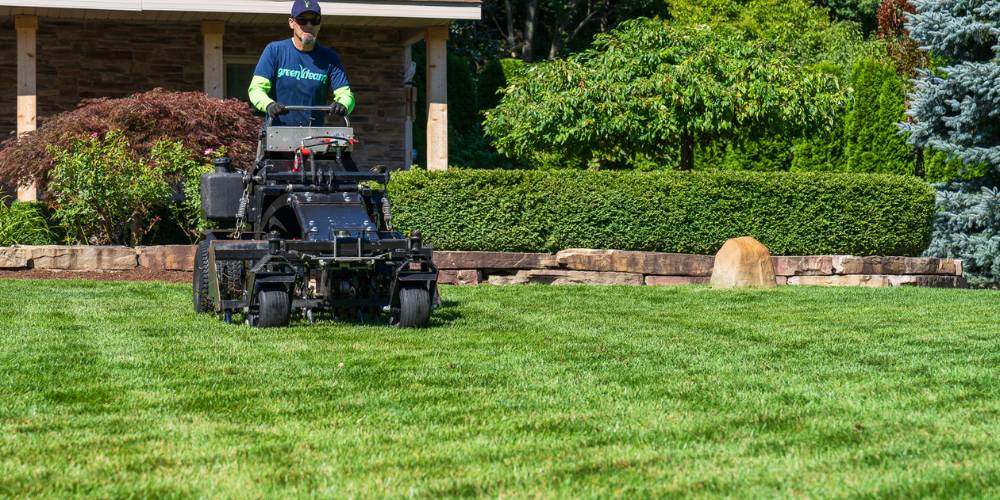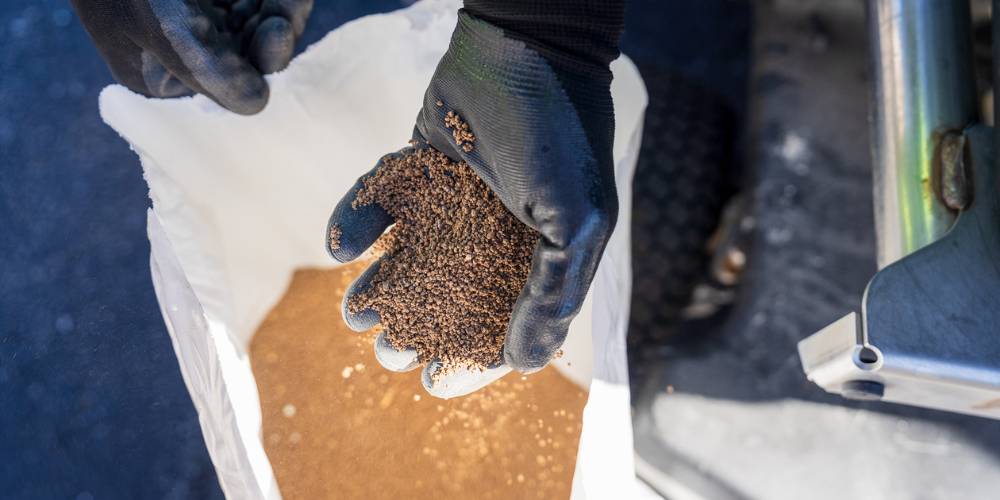
What Should You Do To Your Lawn in the Spring? Caring for Your Lawn in Traverse City, MI this Spring
As the snow melts and the days grow longer, you may start to wonder, “What should I be doing for my lawn right now?” It’s a common question, especially after a long Northern Michigan winter, when your lawn is waking up from dormancy and in need of a little TLC.
The short answer? Spring is the time to focus on jumpstarting your lawn’s health with the right care—fertilizing, mowing, watering, and planning for future maintenance. These early steps lay the foundation for a lush, healthy lawn you can enjoy all summer long.
Let’s explore what to do in the spring months to get your lawn back in good shape and set it up for success.
First Fertilization Application: Starting the Season Strong
Spring is a critical time for lawn care as your grass begins to wake up from its winter dormancy. The first fertilization application sets the stage for a healthy, vibrant lawn all season long, making it one of the most important steps in your spring lawn care routine.
When to Fertilize
Timing is everything when it comes to fertilizing in the spring. The best time to apply fertilizer is when the soil temperature consistently reaches around 55°F, which often coincides with the blooming of forsythia bushes. Applying fertilizer too early can be ineffective, as the grass may not yet be ready to absorb the nutrients.
What Type of Fertilizer to Use
In spring, a fertilizer that includes a preemergent herbicide is essential. The preemergent creates a barrier in the soil to prevent weed seeds, such as crabgrass, from germinating. This proactive step saves you the hassle of dealing with invasive weeds later in the season. Choose a balanced fertilizer with slow-release nitrogen to provide your lawn with a steady supply of nutrients as it emerges from dormancy.
Why Fertilizing in Spring Matters
As your lawn awakens, it needs a boost of nutrients to replenish energy reserves and support new growth. Fertilizing at the right time jumpstarts this process, helping the grass green up quickly and develop strong roots. A well-fed lawn in spring is better equipped to resist weeds, withstand foot traffic, and thrive through summer’s heat.
By prioritizing your first fertilization application and ensuring it’s done with the right products and timing, you’re giving your lawn the best possible start to a lush and healthy growing season.

Watering Your Lawn in the Spring: Finding the Right Balance

Is Spring the Right Time for Seeding?
While spring might seem like a logical time to seed your lawn, it’s not the ideal season for overseeding or filling in bare patches. Fall is generally considered the best time for these tasks because of its cooler temperatures and consistent moisture, which provide optimal conditions for grass seed germination and establishment. However, spring overseeding can still be done under certain circumstances, particularly if your lawn has significant bare areas that need immediate attention.
Why Fall is Best for Overseeding
In the fall, grass seeds have fewer weeds to compete with for sunlight and nutrients, and the cooler weather promotes steady growth without the stress of summer heat. By the time winter arrives, the new grass has established strong roots, making it more resilient to weather fluctuations.
Why Spring Seeding is Less Optimal
Spring overseeding presents challenges because the warmer weather encourages weed growth, which competes with grass seed for resources. Additionally, preemergent herbicides often used in spring fertilization can prevent grass seed from germinating. If you must overseed in spring, carefully plan your fertilization schedule to avoid using preemergents on newly seeded areas.
Aeration and Overseeding: A Powerful Combination
Aeration and overseeding go hand in hand to improve lawn health and thickness. Aeration involves removing small plugs of soil to reduce compaction and increase airflow, water penetration, and nutrient absorption. Overseeding directly after aeration allows grass seed to make better contact with the soil, enhancing germination rates.
- Benefits of Overseeding: Overseeding fills in thin or bare spots, introduces disease-resistant grass varieties, and increases your lawn’s density, making it harder for weeds to take hold. A thick, healthy lawn is more resistant to pests, disease, and environmental stress.
- Benefits of Aeration: Aeration improves root development, enhances water and nutrient absorption, and alleviates soil compaction. It also reduces thatch buildup, which can harbor pests and diseases.
Can Aeration Be Done in Spring?
If aeration wasn’t performed in the fall, it can still be done in the spring, but timing is critical. Aerating too early in spring can lead to weed growth by exposing weed seeds to sunlight and encouraging germination. For best results, aerate in late spring once the grass is actively growing but before temperatures climb too high.
Why Overseeding and Aerating Together Make Sense
When performed together, aeration and overseeding create the perfect environment for new grass to thrive. The aeration holes give seeds a direct path to the soil, while the improved soil structure helps the young grass establish strong roots. This combination fosters a thicker, healthier lawn that can better resist disease, pests, and drought.
By understanding the limitations of spring seeding and leveraging the benefits of aeration and overseeding, you can make informed decisions to promote a lush, vibrant lawn. While fall remains the optimal time for these practices, taking the right steps in spring can still yield significant improvements, especially if your lawn needs immediate attention.

When to Start Mowing in the Spring
As your lawn begins to wake up from dormancy, you might be eager to start mowing, but timing is key. The first mow of the season should wait until the grass has started growing actively and reached a height of at least 3-4 inches. Cutting the grass too early or too short can stress it while it’s still in a fragile state.
Best Practices for Spring Mowing:
- Set your mower blades to a higher setting (around 2.5 to 3 inches) to avoid cutting off too much of the grass at once.
- Ensure your mower blades are sharp to make clean cuts, which reduce stress on the grass and prevent tearing that can lead to disease.
- Mow regularly as the grass grows, but avoid cutting more than one-third of the grass blade height in a single mow
Starting your mowing routine at the right time and with the right techniques helps your lawn establish a strong foundation for the growing season.

Applying Hydretain in Late Spring
As temperatures begin to climb in late spring, water retention becomes a crucial factor in keeping your lawn healthy and green. Hydretain, a moisture management product, can be applied to help your grass retain water and reduce the need for frequent watering. This is especially beneficial in areas where summer droughts or water restrictions are common.
How Hydretain Works:
Hydretain works by pulling moisture from the soil and air around the roots and holding it in place, making it more accessible to the grass. This reduces stress on your lawn during dry periods and helps maintain consistent growth.
When and How to Apply Hydretain:
- Apply Hydretain in late spring, after your lawn has fully greened up and is actively growing.
- Water your lawn thoroughly before application to ensure the product can be absorbed properly.
- Reapply every 3 months or as needed, depending on weather conditions and soil type.
By incorporating Hydretain into your lawn care routine, you can help your grass thrive during the transition into summer while conserving water and preventing drought stress.

Need some help getting your lawn ready this Spring? Call our offices today or fill out our contact form!

Stay in “the know”! Sign up for our free quarterly newsletter to learn tips & tricks for maintaining the perfect yard.
We take your personal information very seriously. We will not share any of the information you provide with any 3rd parties. Provided information will be used specifically to contact you in regards to your inquiry.
Get Started Today
– 1 –
Give us a call or get started by filling out our contact form
– 2 –
Talk with one of our professionals about a plan that works best for you
– 3 –
Sit back and relax. The Green Team will come out swinging



